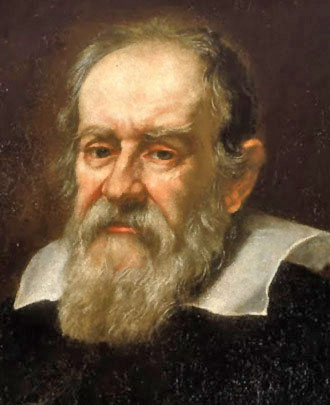 There's a story doing the rounds at the moment that Italian scientists are seeking permission to exhume Galileo's body to see if they can extract DNA from it. Galileo was known to have suffered from a degenerative eye disease that left him blind before he died, so they want to look for evidence in his DNA of what the disease was, and exactly how it might have affected what he saw through his telescope. Paolo Galluzzi, director of the Institute and Museum of the History of Science in Florence, says this might help to explain certain mistakes Galileo made, such as why he described Saturn as having "lateral ears" rather than rings. But really, this project has to be an incredible longshot, even if the researchers do get permission to open Galileo's grave. As one expert in ancient DNA comments in ABC's version of the story: "If you put a human corpse in a coffin and seal it inside a slab of granite, which appears what happened to Galileo's body, there is going to be a huge amount of purification [I assume this is meant to say putrefaction] and decomposition," he says. DNA was recently used to identify 16th-century human remains buried in Poland as belonging to the astronomer Copernicus, but simply checking for a match between two sequences isn't as challenging as trying to identify specific mutations within the genes associated with blindness. Still, it's all great publicity for International Year of Astronomy, organised this year by the International Astronomical Union and UNESCO to celebrate the 400th anniversary of Galileo's first use of an astronomical telescope.
There's a story doing the rounds at the moment that Italian scientists are seeking permission to exhume Galileo's body to see if they can extract DNA from it. Galileo was known to have suffered from a degenerative eye disease that left him blind before he died, so they want to look for evidence in his DNA of what the disease was, and exactly how it might have affected what he saw through his telescope. Paolo Galluzzi, director of the Institute and Museum of the History of Science in Florence, says this might help to explain certain mistakes Galileo made, such as why he described Saturn as having "lateral ears" rather than rings. But really, this project has to be an incredible longshot, even if the researchers do get permission to open Galileo's grave. As one expert in ancient DNA comments in ABC's version of the story: "If you put a human corpse in a coffin and seal it inside a slab of granite, which appears what happened to Galileo's body, there is going to be a huge amount of purification [I assume this is meant to say putrefaction] and decomposition," he says. DNA was recently used to identify 16th-century human remains buried in Poland as belonging to the astronomer Copernicus, but simply checking for a match between two sequences isn't as challenging as trying to identify specific mutations within the genes associated with blindness. Still, it's all great publicity for International Year of Astronomy, organised this year by the International Astronomical Union and UNESCO to celebrate the 400th anniversary of Galileo's first use of an astronomical telescope.